UPDESK Pro Commercial-Grade Electric Adjustable Standing Desk Review
Like most reviews sites, our editorial staff and laboratory testing expenses are partially offset by earning small commissions (at no cost to you) when you purchase something through those links. Learn More

Overview
| Reviewed By |
The Editors |
|---|---|
| Review Summary |
Ironically, while UpDesk calls its higher-end model “commercial grade,” it’s the corporate buyers that demand the greatest stability, need the greatest range in decor options, and have the desire to eliminate installation costs on new standing desks, which is the Pro model’s exact shortfalls. With its limited size and color offerings and involved installation the UpDesk Pro seems to be more of a “premium home” unit than a true commercial-grade standing desk offering. |
| MSRP / List Price | $895 |
| Shipping |
Included |
| Warranty |
Seven years |
| Lift Type |
Dual-stage, Dual Motor LINAK lifters |
| Transit Speed |
1.6 inches per second |
| Controller |
High res LCD display with Bluetooth connection to smartphone app |
| Sizes Available |
Limited to only 30″ x 60″ or 30″ x 72″ |
| Colors Available |
Base and tops are offered in only three colors: black, grey and white |
| Adjustment Range |
23.5″ – 49.5″ |
| Weight Capacity |
375 Lbs |
| Power Consumption |
Unpublished |
| ANSI/BIFMA Certified |
No |
| NEAT™ Certified by Mayo Clinic |
No |
| Competition | Compare to Other Standing Desks |
| Where to buy |
Buy on Amazon |
Rating
| Stability | |
|---|---|
| Reliability | |
| Customer Experience | |
| Quality and Aesthetics | |
| Value | |
| Suitability for Treadmill Desking | |
| Positives | Made-in-America LINAK base is the gold standard in linear actuator quality. Space-age hand controller with Bluetooth link and smartphone app is the way of the future. |
| Negatives | Minimal frame componentry leaves a lot to be desired in stability. Very limited desktop size, shape and color choices, going counter to most competitors offering hundreds of options for ideally matching your decor and space. For this kind of money we'd expect more metal in the frame, a longer warranty period, and more options in size/decor. |
Bottom Line
[UPDATE: Sadly it appears that UpDesk was wiped out by a tornado – offices, inventory and all – per this update on the manufacturer’s website and reports from readers who own UpDesk products. We are leaving the reviews of UpDesk’s products live for posterity and for former customers to be able to find information on why they are no longer responding to customer service requests.]
Nashville-based UpDesk has recently revamped its stand desk product line, reducing choices to just two models. One is the UpDesk “Home Electric” standing desk (a.k.a. “Lite Electric” desk) and the other is the UpDesk Pro “Commercial Grade” standing desk we review here.
The UpDesk Pro is a rebrand of UpDesk’s former Ultra BevelUp desk. Note that models like the UpDesk UpWrite, UpDesk PowerUp, UpDesk Ultra and UpDesk Elemental desks appear to no longer be offered on the company’s website or on Amazon.
Home Versus Commercial Grade – What’s the Difference?
As we cover in our review of the UpDesk Home, their low-end unit is an extraordinarily feature-limited and weakly-powered desk made in China, available in only on size (30″ x 60″) and one color (black). It is the Model-T Ford of standing desks. Businesses can’t buy it because of it’s limited height adjustment range and reliability issues (reflected in its short, two-year warranty).
The UpDesk Pro is their complement to the Home edition, with an American-made LINAK base that can cover the height range of 23.5″ to 49.5″. While this still isn’t an ANSI-BIFMA compliant desk on the low end of the height adjustment range, a lot of business customers like the higher top-end and are OK with a desk being technically non-compliant with the antiquated standard. A lot of the better desks today—especially those emanating from European or American factories—exceed the top-end max height requirement at the expense of the low end, which is in fact more reflective of our ever-taller average American citizen (and especially Scandanavians)—and so “commercial-grade” is a fair label for this desk in this regard.
Unlike the single-stage, single-motor UpDesk Home, the Pro desk is a dual-stage, dual-motor setup with top-end componentry. LINAK is a Danish company that owns the largest and most automated linear actuator factory in the US; they are known for their superior quality of design and precision manufacturing. You won’t find better anywhere in the world. Of course it’s pricier than Chinese-made bases like Jiecang that are used in the majority of commodity standing desks that are sold online, but their legendary reliability and durability are well worth the price.
LINAK bases are usually used in the contract furniture industry by manufacturers like Steelcase, where desks sell for a multiple of what they do online. While the company makes many different flavors of actuators, and within that realm many different lifting columns for stand desks, they define the state-of-the-art of the entire active office furniture industry.
Nearest Competitor to the iMovR Lander Desk, in Some Ways
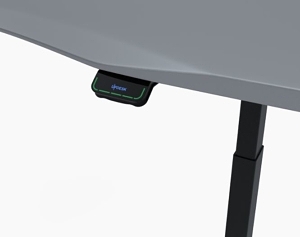 The only other LINAK-based desk we’ve recently seen introduced for the general market (meaning you can buy it online, and don’t have to be a bulk commercial buyer) is the Lander Desk from iMovR. Similarities between the two desks are limited to the actuator legs and the high-tech, Bluetooth-capable hand controller that works with a downloadable smartphone app. You can read all about that in our Lander Review. But the similarity ends after these two components.
The only other LINAK-based desk we’ve recently seen introduced for the general market (meaning you can buy it online, and don’t have to be a bulk commercial buyer) is the Lander Desk from iMovR. Similarities between the two desks are limited to the actuator legs and the high-tech, Bluetooth-capable hand controller that works with a downloadable smartphone app. You can read all about that in our Lander Review. But the similarity ends after these two components.
Comparing the two desks side-by-side, the Lander is far more user-friendly and versatile. Shipped almost completely pre-assembled, the Lander Desk comes together in just minutes, without tools (see video), whereas the UpDesk Pro still requires the customer to bolt the legs to the desktop and the feet to the legs, and then screw down the hand controller and tack down all the cables. Not quite the “IKEA kit” that most standing desk assemblies will remind you of, but not fully pre-assembled, either. The Lander’s frame also incorporates a crossbar that connects the two lifting columns in a steel frame, providing far more stability. Its feet are also stronger and heavier, lowering the center of gravity of the desk and providing yet more stability.
Next, the desktops. UpDesk has gone in the direction of offering fewer color and size options, rather than more like most of their competitors are doing. The desktop is a thin 3/4″, epoxy-coated, MDF affair available in only two sizes, 30″ x 60″ and 30″ x 72″, with a nice contoured user edge. Plain rectangular shapes are not even offered, just this one shape (a consideration for those who plan to mount an under-counter keyboard tray). And like the base, UpDesk is only offering its desk tops in the choice of black, grey and white.
Contrast this with the Lander desk’s hundreds of choices in desktop sizes, shapes and colors, including wood grains like mahogany, cherry and maple. The iMovR tops are ergo-contoured and enrobed in Surf(x) 3D-laminate, giving them the look of natural hardwood, but hermetically sealed and impervious to even the harshest cleaning chemicals. They’re also almost twice the thickness of the UpDesk desk tops at 1.125″, lending even more stability to the desk. While epoxy coating is definitely better than the usual powder-coated desktops that competitors like Jarvis and UpLift offer, it’s got the look and feel of plastic, not natural wood.
As for height range, the Lander is available with 6″ leg extensions, as well as caster wheels (adding another 2.5″ of height) for the truly tall individual, or anyone who wants to pair their standing desk with an office treadmill (.g. iMovR’s ThermoTread GT). A lot of people get the height extenders even if they aren’t 6’9″ tall but just want to have a more stable typing experience near the top end of the height range—adding the extenders increases the overlap area at the ends of the telescoping tubes of the lifting columns. To learn more about factors impacting desk stability check out our primer on Why Some Standing Desks Shake More Than Others.
Both UpDesk and iMovR include free shipping in their desk prices now. The warranty on all made-in-America iMovR standing desks is ten years, whereas UpDesk is offering only seven years on the Pro model, and two years on the Chinese-sourced Home desk.
For the difference in price of about $200 between the UpDesk Pro and the Lander you get a lot of value, including a whole lot more stability, a longer warranty, no-tools assembly, 3D-laminated tops, and hundreds of choices of desktop sizes and shapes. A couple of things on UpDesk’s side of the scoreboard is that they do offer a 3-legged L-desk version of the Pro Desk and they also include a couple of cable channels as part of their assembly kit (iMovR offers a cable management kit as an add-on option with a bunch of other components for tidying up the spaghetti cords under your desk).
The Takeaway on the UpDesk Pro
From a marketing/position standpoint UpDesk seems to have shifted to more recent LINAK technology, while at the same time embracing low-tech, low-quality components from China for its Home edition desk. In the process they’ve also eliminated many of the desktop choices they used to offer in the past, going for the simpler-is-better approach.
We are huge fans of American-made stand desks because they are generally manufactured to much higher quality standards than the likes of UpLift Desk, the Fully Jarvis and other commodity brands; and they wind up being a better value over the lifetime of the product—this much is irrefutable. So we’re still shaking our heads a bit over UpDesk’s schizophrenic move in trying to have a foot in both the commodity market with the Home unit and the premium market with the Commercial Grade unit.
Brand positioning aside, the UpDesk Pro is a good choice for the consumer who wants an American-made desk but isn’t concerned about decor/size choices, assembly difficulty, optimal stability or the longest warranty term. At $895 it’s definitely premium priced and we would have expected a little more for that kind of dough. When compared side-by-side the iMovR Lander Desk seems to offer more versatility and value for the money.
Ironically, while UpDesk calls its higher-end model “commercial grade,” it’s the corporate buyers that demand the greatest stability, need the greatest range in decor options, and have the desire to eliminate installation costs on new standing desks, which is the Pro model’s exact shortfalls. With its limited size and color offerings and involved installation the UpDesk Pro seems to be more of a “premium home unit” than a true commercial-grade standing desk offering.
See also our UPDESK Pro SquaredUp Corner Standing Desk Review, part of our round-up of Corner and L-Shaped Standing Desk Reviews.
See all our detailed product reviews in the Best Stand Desks Reviews round-up. Subscribe to our free newsletter to stay abreast of all our latest office fitness product reviews.
Many standing desks and converters come with grommets for some added convenience. Check out our article on grommet holes for everything you need to know about the different ways to use them to enhance your workstation, what to look for in your grommet holes, and where to find the desks with the best ones.


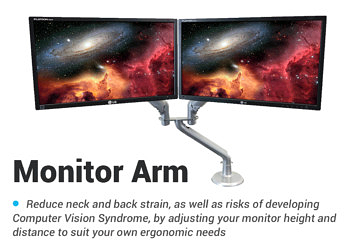
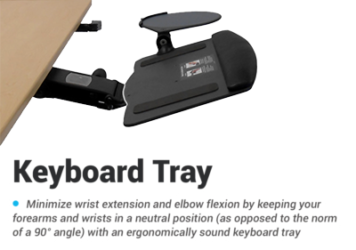
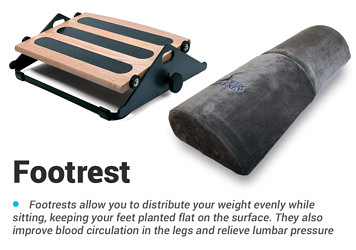
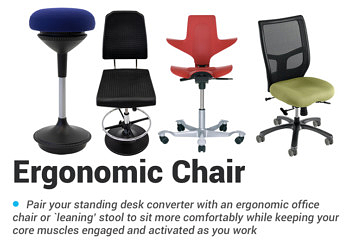
0 Comments
Leave a response >